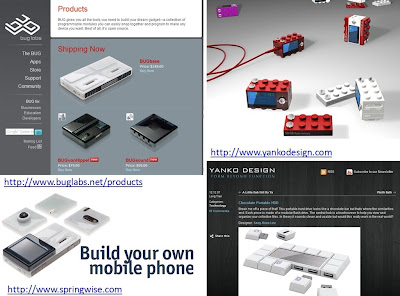In my lecture on user interface engineering I start out with a short history of human computer interaction. I like to discuss ideas and inventions in the context of the people who did it, besides others I take about Vannevar Bush and his vision of information processing [1], Ivan Sutherland’s sketchpad [2], Doug Engelbart’s CSCW demo (including the mouse) [3], and Alan Kay’s vision of the Dynabook [4].
One aspect of looking at the history is to better understand the future of interaction with computers. One typical question I ask in class is „what is the ultimate user interface“ and typical answers are „direct interface to my brain – the computer will do what I think“ and „mouse and keyboard“ – both answers showing some insight…
 As the mouse is still a very import input device (and probably for some time to come) there is a recent paper that I find really interesting. It looks at how the mouse could be enhanced – Nicolas Villar and his colleagues put really a lot of ideas together [5]. The paper is worthwhile to read – but if you don’t have time at least watch it on youtube.
As the mouse is still a very import input device (and probably for some time to come) there is a recent paper that I find really interesting. It looks at how the mouse could be enhanced – Nicolas Villar and his colleagues put really a lot of ideas together [5]. The paper is worthwhile to read – but if you don’t have time at least watch it on youtube.
[1] Vannevar Bush, As we may think, Atlantic monthly, July 1945.
[2] Ivan Sutherland, „Sketchpad: A Man-Machine Graphical Communication System“ Technical Report No. 296, Lincoln Laboratory, Massachusetts Institute of Technology via Defense Technical Information Center January 1963. (PDF, youtube).
[3] Douglas Engelbart, the demo 1968. (Overview, youtube)
[4] John Lees. The World In Your Own Notebook (Alan Kay’s Dynabook project at Xerox PARC). The Best of Creative Computing. Volume 3 (1980)
[5] Villar, N., Izadi, S., Rosenfeld, D., Benko, H., Helmes, J., Westhues, J., Hodges, S., Ofek, E., Butler, A., Cao, X., and Chen, B. 2009. Mouse 2.0: multi-touch meets the mouse. In Proceedings of the 22nd Annual ACM Symposium on User interface Software and Technology (Victoria, BC, Canada, October 04 – 07, 2009). UIST ’09. ACM, New York, NY, 33-42. DOI= http://doi.acm.org/10.1145/1622176.1622184







